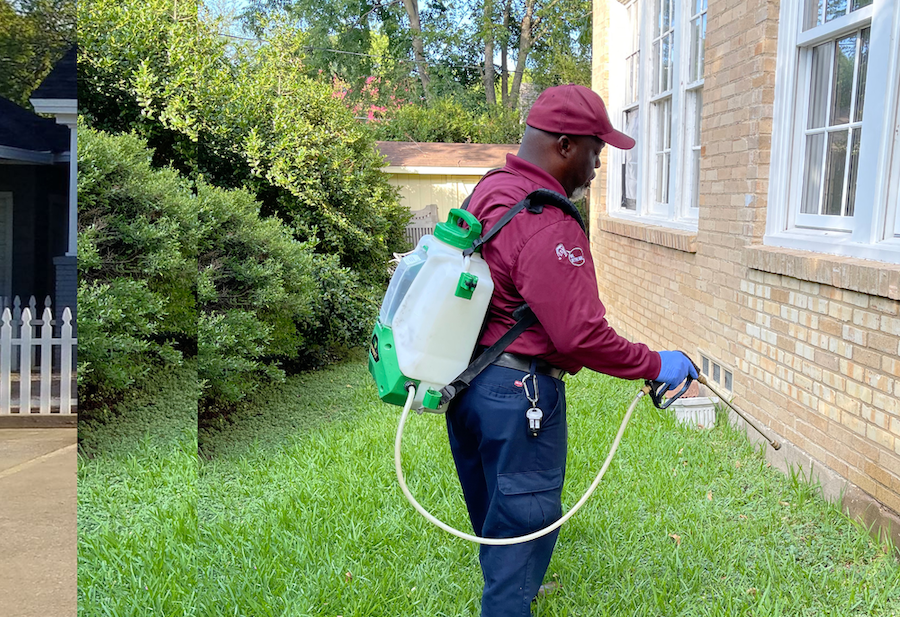Trusted A1 Exterminator Charlotte NC - Comprehensive Pest Solutions
Trusted A1 Exterminator Charlotte NC - Comprehensive Pest Solutions
Blog Article
Bed Insect Therapy Breakdown: Comparing Chemical Vs. Non-Chemical Solutions
In the world of pest control, specifically when handling the persistent problem of bed bugs, the choice in between chemical and non-chemical therapy solutions can be a crucial one. Both approaches offer distinctive advantages and drawbacks, influencing factors such as effectiveness, safety and security considerations, and overall expense. By taking a look at the nuanced information of each technique, a more clear understanding of which path to pursue in dealing with a bed pest invasion can be acquired.
Performance of Chemical Therapies
Chemical treatments for bed bug problems have been extensively recognized for their rapid and potent efficiency in getting rid of these parasites. When thinking about the efficiency of chemical therapies, it is vital to recognize that they can provide a detailed and fast solution to a bed pest trouble.
Moreover, chemical treatments have the advantage of providing recurring effects, suggesting that they can remain to eliminate bed insects even after the first application. This residual action is especially beneficial in combating any potential re-infestations. Additionally, the fast activity of chemical treatments can bring relief to individuals facing severe bed pest invasions, allowing them to reclaim control of their space promptly.
Safety Interest In Chemical Solutions
One critical element that calls for cautious consideration when using chemical options for bed insect therapy is ensuring the security of residents and the environment. While chemical therapies can be efficient in removing bed insects, they may present dangers if not handled effectively. One of the main safety and security worries with chemical remedies is the prospective harm they can create to human health. Direct exposure to specific chemicals used in bed pest therapies can bring about breathing issues, skin irritation, or various other adverse responses, particularly in people with pre-existing problems or level of sensitivities. In addition, improper application or dosage of chemical pesticides can lead to harmful residues remaining in the cured area, posturing lasting health and wellness risks to passengers.
In addition, the ecological effect of chemical solutions is one more significant consideration. Some chemicals used in bed bug treatments may be unsafe to valuable insects, wild animals, and ecosystems if they seep right into the soil or water systems. It is necessary to make use of chemical treatments deliberately, following safety and security standards, and thinking about less harmful choices to reduce these threats and ensure the reliable and safe management of bed pest invasions.
Advantages of Non-Chemical Approaches
Taking into consideration the potential safety and security worries and ecological impact connected with chemical remedies for bed pest treatment, discovering non-chemical approaches presents an appealing alternative with home pest prevention several distinctive benefits. Non-chemical approaches use a much safer choice for houses, particularly those with animals, youngsters, or individuals conscious extreme chemicals. These techniques remove the dangers of direct exposure to harmful substances, minimizing the possibility for unfavorable health results. In addition, non-chemical treatments are eco friendly, as they do not add to air or water pollution, making them a lasting selection for pest control.
Additionally, non-chemical solutions can be efficient in targeting bed insects, consisting of hard-to-reach areas where chemical therapies might not penetrate - A1 bed bug treatment in charlotte. Methods such as warmth therapy, vacuuming, vapor cleansing, and cushion coverings supply detailed removal without the usage of damaging chemicals.
Limitations of Non-Chemical Treatments

Furthermore, non-chemical treatments commonly need numerous applications to accomplish effective removal. This can be time-consuming and might not constantly assure total removal of all bed pests and their eggs, specifically in surprise or hard-to-reach locations.
Additionally, the success of non-chemical therapies heavily depends on appropriate execution and thoroughness, which can be challenging for individuals without expert proficiency. Inadequate application of non-chemical techniques might cause incomplete removal, causing consistent invasions and the need for extra therapies.
Therefore, Go Here while non-chemical treatments have their advantages, it is vital to acknowledge these restrictions and consider them when figuring out one of the most reliable method for taking care of bed bug infestations.
Price Comparison: Chemical Vs. Non-Chemical Options
Given the constraints connected with non-chemical therapies, a vital facet to evaluate in the context of bed bug administration is the price comparison in between chemical and non-chemical options. In contrast, non-chemical treatments like warm treatment or heavy steam can be more expensive, with prices special info varying from $1,000 to $6,000 for an entire home. While the first cost of chemical treatments might appear lower, numerous treatments might be required to fully eliminate the infestation, potentially enhancing the general expense.
Verdict

Considering the prospective security problems and ecological influence linked with chemical solutions for bed pest therapy, exploring non-chemical methods presents an appealing alternative with several distinctive advantages.Given the limitations connected with non-chemical therapies, a necessary facet to assess in the context of bed pest management is the cost contrast in between chemical and non-chemical choices. In comparison, non-chemical therapies like warm treatment or steam can be a lot more expensive, with prices varying from $1,000 to $6,000 for an entire home. While the first cost of chemical therapies may appear lower, several therapies might be needed to completely eradicate the invasion, potentially boosting the overall price.In final thought, when contrasting chemical and non-chemical bed insect treatment choices, it is essential to think about effectiveness, safety and security, advantages, restrictions, and cost.
Report this page